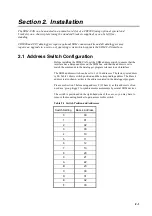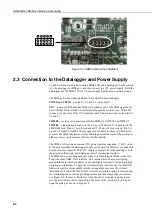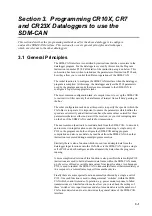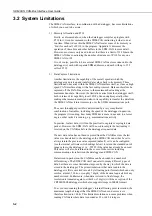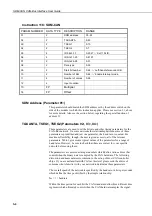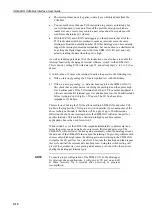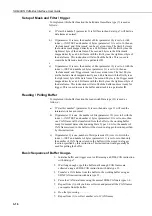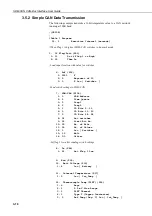
Section 3. Programming CR10X, CR7 and CR23X
This is often shown in a diagram, thus:
S-SG PROP_SEG
PHASE_SEG1 PHASE_SEG2
Bit time (t
bit
)
Sample point
1 time-quanta
(t
q
)
t
TSEG1
t
TSEG2
The bit time is divided into time-quanta (
t
q
), of which there are between 8-23
time- quantum in the bit time. The
t
q
(in seconds) used by the SDM-CAN is set
by the scaling factor TQUANTA (parameter 02). This is the parameter that largely
determines the baud rate. To work out a suitable value of TQUANTA, knowing
the required
t
q
, the following equation is used:
TQUANTA = t
q
* 8*10
6
The first time segment is known as the synchronisation segment (S-SG) and by
convention is one time-quanta long.
This is followed by two segments known as the propagation segment and phase
segment one. These are determined by the characteristics of the network and other
devices on the network. The total of these two time segments determines the time
when the SDM-CAN samples the data bit and is known as t
TSEG1
. The final
segment is known as phase segment two or t
TSEG2
The relationship between these times is summarised by:
t
bit
=t
q
+t
TSEG1
+t
TSEG2
t
TSEG1
(in seconds) is set using the scaling factor TSEG1 (parameter 03), the value
of which is calculated using the following equation:
TSEG1 = t
TSEG1
/ t
q
t
TSEG2
is set using scaling factor TSEG2 (parameter 04) the value of which is
calculated using:
TSEG2 = t
TSEG2
/ t
q
When determining the settings of these parameters it is important to ensure that
the size and total number of t
q
exactly matches the baud rate at which the network
is to run, as the tolerance allowable is normally quoted as +/-1.5%.
The relative settings of TSEG1 and TSEG2 are not so critical as they control when
the hardware samples the data value and there is normally quite a wide tolerance
over which this will work.
If no data other than the baud rate of a network is available a simple ‘rule of
thumb’ is to set the parameters such that there are at least eight time-quanta in the
span of the bit width and that the sample point is 80% through the bit width.
3-5



